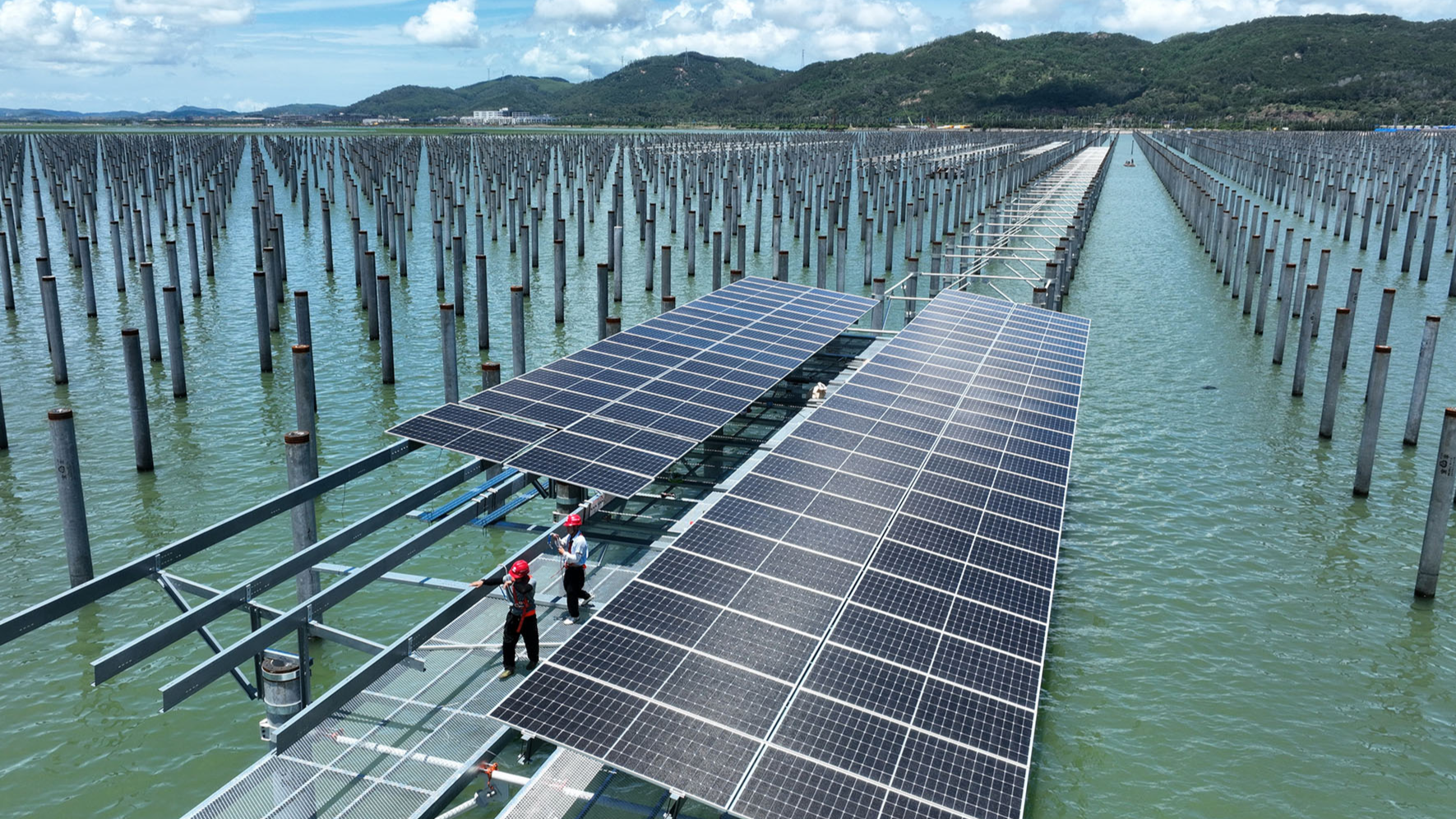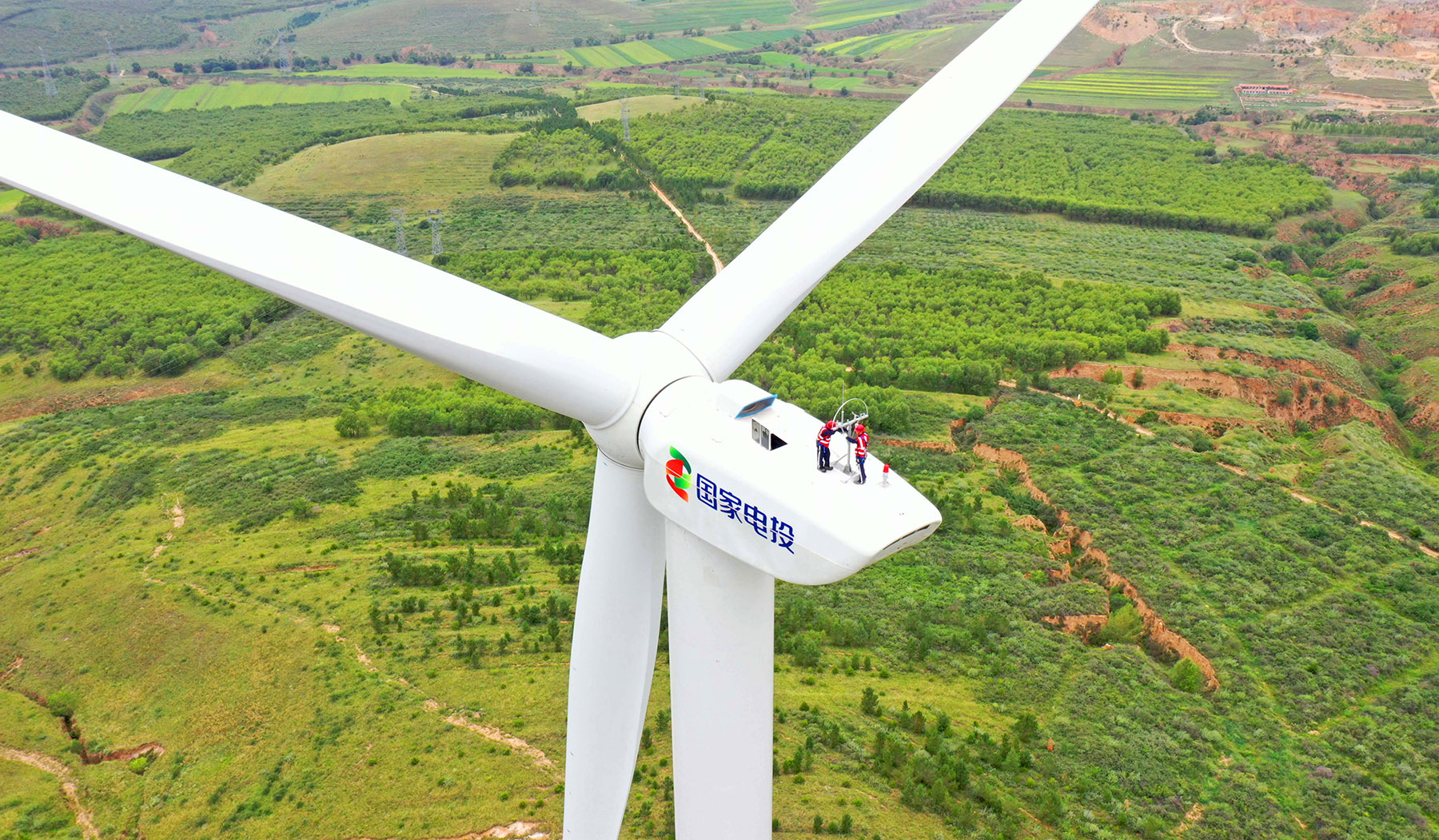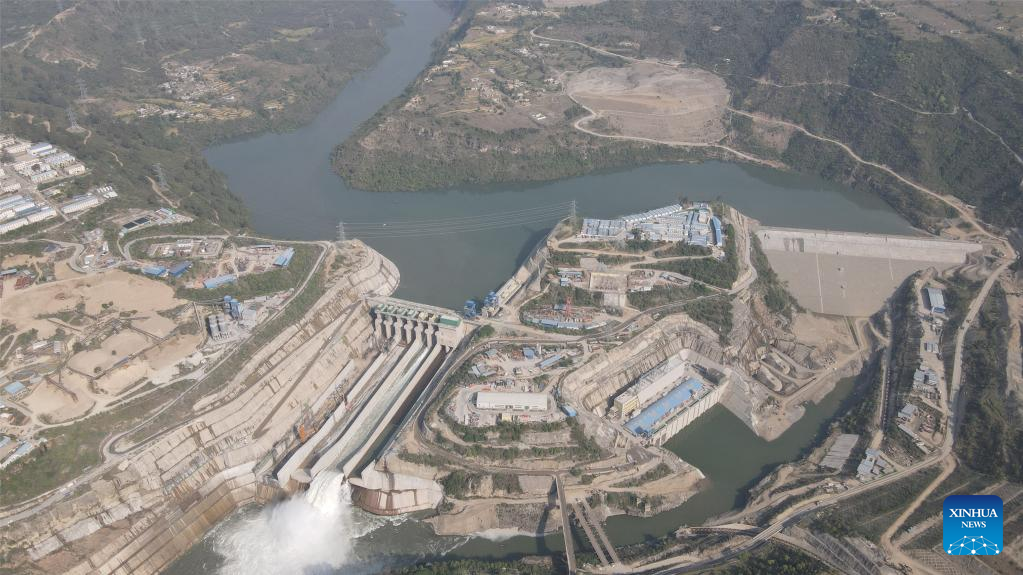
BEIJING - China has become the world's largest investor in energy transition, contributing to global energy transition and a clean world, said a white paper issued Thursday.
The country's investment in energy transition reached $676 billion in 2023, making it the world's largest investor in this field, according to the white paper titled "China's Energy Transition."
The country has doubled its efforts in technological innovation to upgrade new energy technology at a faster pace, contributing enormously to a sharp reduction in the costs of wind power and photovoltaic power worldwide, according to the white paper.
China has worked with more than 100 countries and regions on green energy projects, while its new energy industry has added to the global energy supply, eased global inflation pressures, and contributed to the global effort to combat climate change and transition to green development.
ALSO READ: China leading light in clean energy efforts
China's exports of wind power and photovoltaic products helped other countries reduce carbon dioxide emissions by about 810 million tonnes in 2023, according to the white paper.
Over the past decade, China has furthered reform of its energy production and consumption methods, upgraded its energy supply capacity under the guidance of its new energy security strategy, and achieved historic breakthroughs in green and low-carbon energy development, according to the white paper.
By the end of last month, China's installed capacity of renewable energy had reached 1.68 billion kilowatts, accounting for over 54 percent of the country's total installed capacity, Song Wen, an official with the National Energy Administration, told a press conference on Thursday.
Over the past decade, annual power generation from non-fossil fuels has increased by 2.2 trillion kilowatt-hours, which is equivalent to reducing carbon dioxide emissions by approximately 2 billion tonnes, Song added.
The country's energy intensity has decreased steadily over the past decade, leading to energy savings equivalent to about 1.4 billion tonnes of standard coal and reducing carbon dioxide emissions by about 3 billion tonnes, said the white paper.

"Based on high-quality development, China's energy transition aims to build a clean, low-carbon, safe and efficient energy system. This initiative will provide a strong guarantee for the country's economic and social development and meet the people's growing desire for a better life," said the white paper.
Controlling both the volume and intensity of energy use has become a crucial institutional measure of the country, the document said.
ALSO READ: China to build ‘new electricity system’ for green growth, energy security
Over the past decade, the energy consumption per unit of added value of industrial enterprises with an annual revenue of 20 million yuan ($2.81 million) and above has dropped by more than 36 percent. Comprehensive energy consumption per unit of product in the steel, electrolytic aluminum, cement and glass has lowered by more than 9 percent on average.
In 2023, the total output value of the energy conservation service industry exceeded 500 billion yuan, doubling that of 2013.
New drivers for global green development
China has been responsible for over 40 percent of the annual additions to global renewable energy capacity since 2013. In 2023, the newly installed capacity in China accounted for more than half of the world's total, according to the white paper.
Zhang Jianhua, head of the administration, attributed the country's rapid development of its renewable energy industry to continuous technological advancements, complete industrial supply chains and a favorable market environment.
When asked about whether China will set more ambitious carbon reduction targets, Li Chuangjun, an official with the administration, said that China has remained committed to its carbon emissions peaking and carbon neutrality goals, and will determine its own path, approach and pace of achieving these goals, which should not be influenced by others.
"China will stick to the principle of common but differentiated responsibilities and respective capabilities, and set well-conceived new goals and measures in light of the country's national realities," Li said.
The International Energy Agency recognized in a report that China is a front-runner in the global renewable energy sector and a major driving force behind the world's rapid expansion of renewable energy capacity.
From 2014 to 2023, the share of non-fossil fuels in global energy consumption rose from 13.6 percent to 18.5 percent, with China contributing 45.2 percent to this increase, said the white paper.

According to a report from the International Renewable Energy Agency, global wind power projects have seen the average power generation cost per kilowatt-hour decrease more than 60 percent over the past decade, and photovoltaic power projects have seen a cost decrease by more than 80 percent. The reductions are largely attributable to China's green energy shift.
China's further opening up has created new opportunities for deeper international cooperation on clean energy, said the white paper. Restrictions on foreign investment have been removed in all energy industries except nuclear power plants.
Multinationals such as GE, BP and Siemens are steadily expanding their investment in China's energy sector. Many foreign projects are well underway across the country, including EDF's offshore wind power project, Tesla's electric vehicle project in Shanghai, and LG Energy Solution's battery project in Nanjing, Jiangsu province.

Advancing BRI cooperation in green energy
The document also pointed out that China has worked with countries involved in the Belt and Road Initiative to deepen the energy transition, advance green cooperation, and achieve sustainable development.
In 2021, China pledged to stop building new coal-fired power plants overseas, and focused on green and low-carbon energy projects in its energy cooperation with its partner countries, the white paper said.
ALSO READ BRI: China, ASEAN advised to cooperate on green energy
The country is also working on jointly building platforms for high-level energy cooperation, including the Belt and Road Energy Partnership, with its member countries reaching 33, according to the white paper.

Industrial, supply chains of clean energy
Meanwhile, China will work with the rest of the world to improve the industrial and supply chains of clean energy and contribute to global sustainable energy development, the white paper pointed out.
Noting that the international situation has become increasingly complex, with various forms of green barriers on the rise, the white paper highlighted the challenge to keep global energy industrial and supply chains stable and maintain energy security in an open environment.
READ MORE: China releases 2024-25 energy conservation action plan
In response to these challenges, China is committed to improving bilateral and multilateral cooperation mechanisms in the energy sector, strengthening the exchange of policy ideas and best practices in energy transition, and advancing cooperation and capacity building on green and low-carbon technologies, it said.
China opposes overstretching the concept of national security and imposing baseless restrictions on normal international development cooperation, and all forms of unilateralism and protectionism, said the white paper. China rejects all forms of decoupling, any severing of industrial and supply chains, and the "small yard and high fence" approach, it added.



